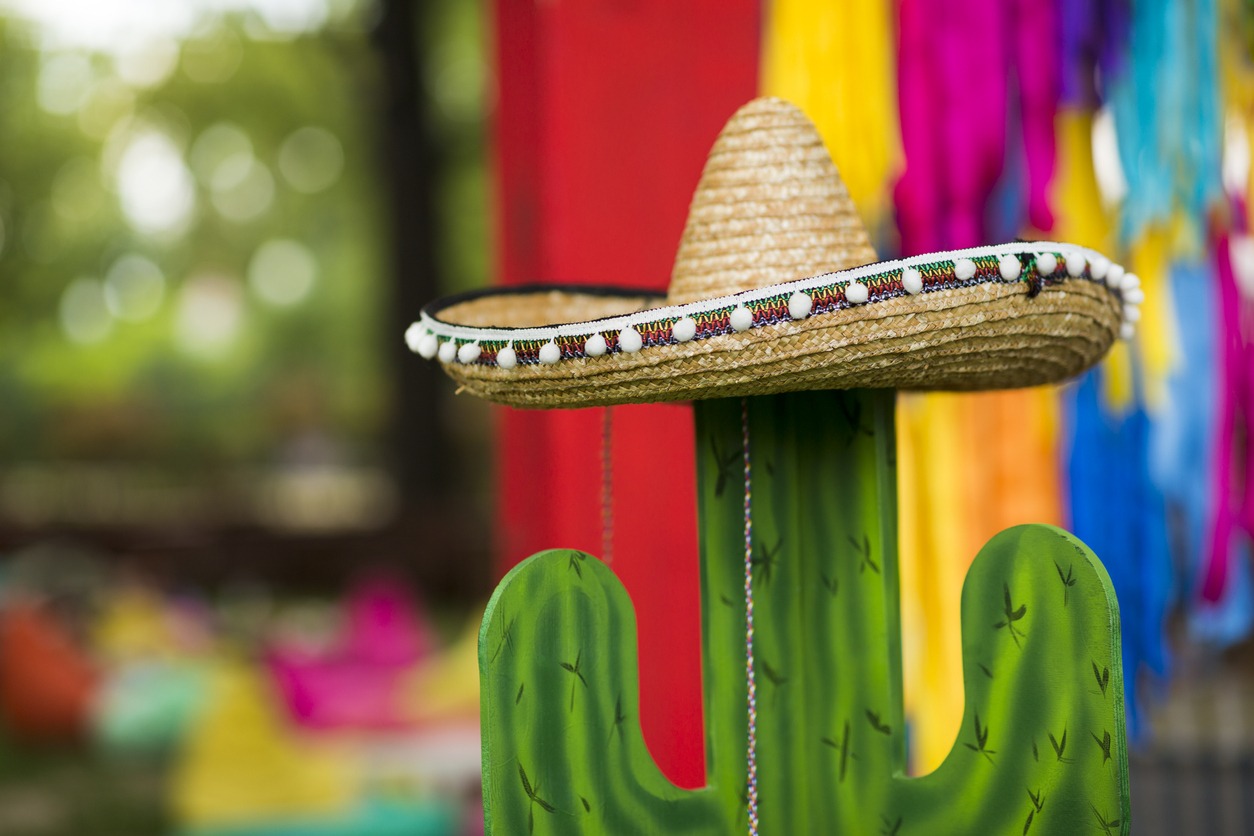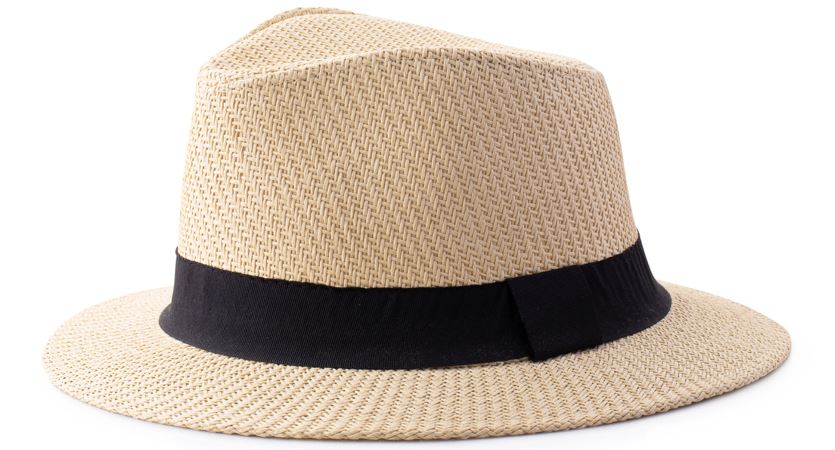Like the beret hat for the French, the sombrero has long been associated with Mexico. Sombreros are straw or felt hats with a wide brim, usually upturned at the edges, and a high-pointed crown.
For centuries, the sombrero has characterized the image of Mexicans in the entire world: from Veracruz musicians to Emiliano Zapata, hats have always contributed to Mexican society. We’ll take you through the history of the Mexican hat and its various styles, which vary by region and are made from various materials for different purposes.
What Is a Sombrero?
Sombrero is a Spanish word that alludes to a type of Mexican hat. The name is obtained from the Spanish word ‘Sombra,’ which means ‘shade.’ It translates literally as ‘shader.’
It typically has a high-pointed crown, an extra-wide brim broad enough to project a shadow over the wearer’s neck, head, and shoulders, and a chin string to keep it in place. Cowboys interpreted the term to mean any wide, broad-brimmed hat.
Peasant sombreros are typically made of straw in Mexico, whereas wealthier people wear felt sombreros. They are available in various woven patterns, colors, and decorations.
Sombreros are seldom seen in modern urban settings unless they are part of folkloric outfits worn on special occasions. The Mexican sombrero has become a cultural and national symbol, and it is frequently worn in traditional Mexican celebrations, particularly by communities outside of Mexico.
History of the Sombrero Hat
View this post on Instagram
The word sombrero is now synonymous with the wide-brimmed Mexican hat, but its origins can be traced back to Spain. People from this country wore hats called “sombreros cordobés” (translated as “wide-brimmed hats”) as far back as the 17th century, a traditional hat from the Andalusia and Córdoba Spanish territories. This hat is distinguished by a flat crown that measures 10-12cm in height and a perfectly flat and relatively short brim that measures 8-12cm in width.
Mexican sombreros are thought to have originated when Spanish immigrants introduced Sombrero cordobés to the New World. There are multiple theories on how and who invented sombreros in Mexico. Some believe they were created by mestizo workers, Latinos of Native American and European descent who worked in Mexico and the southern United States.
Others believe that horse riders from Jalisco’s capital, Guadalajara, invented the sombrero and made it a part of their uniform. Some believe that early Texas cowboys adopted the Spanish sombrero as a practical solution to the problem of harsh sunlight.
The Philippines, too, has a history of using these Mexican hats, brought there by Mexican influence via the Manila Galleon Trade, which ran from 1565 to 1815 between Acapulco, New Spain (now Mexico), and Manila (now the Philippines). The Zenu Indian tribes of Colombia have their version of the sombrero, which is made of softer materials and can also be folded and stored without fear of losing its shape when used again.
Types of Sombreros
The Calentano
The Calentano hat is from the Tierra Caliente, or hot earth, region of Mexico, which includes the states of Michoacán, Guerrero, Guanajuato, and the State of Mexico. The sides of the hat are turned up and secured with a black ribbon (although the hat is made with upward curving sides, so it retains its shape even when you untie the ribbon).
The Calentano hat style originated in Tlapehuala, Guerrero (where the natural palm is plentiful) and is made from sun-dried palm leaves, granting the hat its beige color. The hand-sewn, most labor-intensive versions of this hat are the most expensive.
The Jipijapa
Hats made from jipi, a short palm native to Mexico, are almost entirely produced in Bécal, a town in the Mexican state of Campeche. The traditional variant of this hat (which can be shaped into various styles) is known as a Panama hat, but the first type in the world was made in Mexico.
The Bécal families, which are few, have become well-known for their skills as basket and hat makers. Every family has a cave constructed into the rear of their houses or off their patios, several of which are carved out of the limestone rock common in the area.
The Charro
In the thoughts of the rest of the world, the charro is somewhat the most ubiquitous Mexican hat. This Mexican hat has a wide flat brim, and a high top that looks like two giant fingers squeezed it. This is the hat that most mariachi musicians wear, sometimes with brims extending further than the original charro design but always embellished and embroidered with silver and gold threads, sequins, beads, and other eye-catching elements.
A Charrería is a rodeo-style competition that includes horsemanship, dances, and equestrian tricks that are considered Mexican national sports. Its participants, known as charros, wear this type of hat.
The Zapata
This is a variation on the charro hat made famous by revolutionary fighter Emiliano Zapata, with a tall, pointed top and a wide brim. It is sometimes referred to as a piloncillo in Mexico since it resembles the brown sugar cones sold in Mexican markets.
These wide-brimmed cone sombreros are more often used for display or as a joke during Mexican holidays than worn by Mexicans daily. Many Mexican cities have street stands selling them around the country’s Dia de la Revolución and Independence Day.
The Jarocho
Jarocho is a nickname handed to Mexicans from the southern port of Veracruz and its outlying areas, and son jarocho is the regional music played in this area. While today’s son jarocho musicians wear various outfits, traditional outfits for the dances include elaborate blouses and skirts for women and pants and white guayabera shirts for men. The men often wear a jarocho hat crafted with white palm leaves with four indentations on top resembling an inverted four-leaf clover.
The Tejano
View this post on Instagram
This hat is known as a “Northern” or “Texan” hat because it is popular in the American Southwest and northern Mexico. It has fractionally upturned sides (though not as pronounced as the Calentano) and a deep impression in the shape of an arrow on the top.
This is the classic look seen in old Westerns and can still be seen on cowboys’ heads in northern Mexico. Tejano hats are typically made of animal skin and have a thin band around their base.
The Charro 24
This hat is made of palm with deeply upturned sides and a high rounded point for its top. It is considered the most elegant sombrero in the Isthmus of Tehuantepec. After the hat is formed and shaped from the palm, it is covered in velvet (typically red) and trimmed with gold around the edge and base. This hat style is unique to the Zapotec citizens of Oaxaca and is only worn on special occasions.


